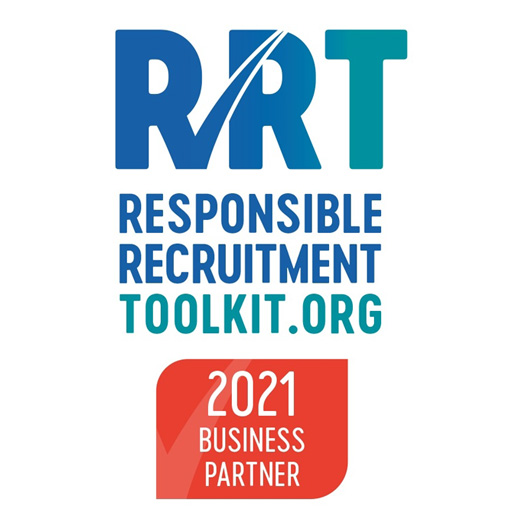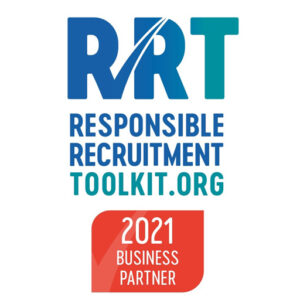1.0 SCOPE
1.1 This Policy applies to all employees, suppliers and visitors to the Company, together with those contracted to work at or for the Company.
1.2 This Policy is fully supported by senior management.
1.3 The Policy will be monitored and reviewed annually
2.0 PURPOSE
2.1 The purpose of this Policy is to provide equality and fairness for all in our employment and not to discriminate because of race, religion or beliefs, age, marriage or civil partnership, gender reassignment, sexual orientation, sex, disability, pregnancy or maternity. Employeehire Ltd. has a zero tolerance to slavery and human trafficking. We oppose all forms of unlawful and unfair discrimination. All employees, whether part-time, full-time or temporary, will be treated fairly and with respect. Selection for employment, promotion, training or any other benefit will be on the basis of aptitude and ability. All employees will be helped and encouraged to develop their full potential and the talents and resources of the workforce will be fully utilised to maximise the efficiency of the organisation.
3.0 AIMS
3.1 To create an environment in which individual differences and the contributions of all staff are recognised and valued;
3.2 Every employee is entitled to a working environment that promotes dignity and respect to all;
3.3 No form of intimidation, bullying or harassment or slavery and human trafficking will be tolerated;
3.4 To ensure training, development and progression opportunities are available to all employees;
3.5 To provide equality in the workplace;
3.6 To ensure all employment practices and procedures are fair;
3.7 Breaches of the Equality & Diversity Policy will be regarded as misconduct and could lead to disciplinary proceedings.
4.0 MEANING OF EQUALITY AND DIVERSITY
4.1 Equality is ensuring individuals or groups of individuals are treated fairly and equally and no less favourably, specific to their needs, including areas of race, gender, disability, religion or belief, sexual orientation and age.
4.2 Promoting equality should remove discrimination in all of the aforementioned areas. Bullying, harassment or victimization are also considered as equality and diversity issues.
4.3 Diversity aims to recognise, respect and value people’s differences to contribute and realise their full potential.
5.0 MEANING OF SLAVERY AND HUMAN TRAFFICKING
5.1 Slavery is the status or condition of a person over whom all or any of the powers attaching to the right of ownership are exercised. Since legal ‘ownership’ of a person is not possible, the key element of slavery is the behaviour on the part of the offender as if he/ she did own the person, which deprives the victim of their freedom.
5.2 Human trafficking is a modern form of slavery. It involves controlling a person through force, fraud, or coercion to exploit the victim for forced labour, sexual exploitation, or both.
6.0 PROTECTED CHARACTERISTICS
6.1 The Equality Act identifies nine ’protected characteristics’. These are the attributes that are currently protected under existing legislation:
Sex
Gender Reassignment;
Marriage and Civil Partnership;
Race;
Disability;
Age;
Religion or Belief;
Sexual Orientation;
Pregnancy and Maternity;
6.2 Sex (Gender)
Women and men are fully and properly represented and rewarded for their contribution at all levels of the organisation through:
challenging gender stereotypes
supporting employees in balancing their life at work and at home.
6.3 Gender Reassignment (Gender identity)
Employees who plan to undergo, are undergoing, or have undergone gender reassignment are protected against all forms of discrimination and harassment. Employeehire Ltd. will take positive steps to support a transgender person and ensure they are treated with dignity and respect.
6.4 Marital/civil partnership status
Employees are treated fairly and equally in the workplace irrespective of their marital/civil partnership or family status.
6.5 Race (Ethnicity) and caste
The ethnic and cultural diversity of our communities is represented at all levels of the organisation through:
challenging racial/ethnic/caste stereotypes
understanding, respecting and valuing racial/ethnic/caste and cultural differences and perspectives
encouraging and enabling members of minority ethnic groups to work for our company through positive action.
6.6 Disability
The abilities of disabled people are recognised and valued at all levels of the organisation through:
focusing on what employees can do rather than what they cannot do
challenging stereotypes about disabled people and in particular, not making assumptions about an individual’s ability
making appropriate reasonable adjustments in the workplace so that all employees can reach their full potential regardless of any disability
6.7 Age
Age diversity within the workforce is promoted and valued through:
challenging age stereotyping, recognising that new ideas and fresh approaches can come from anyone irrespective of their age
recognising the benefits of a mixed-age workforce
6.8 Religion or belief
Employees are treated fairly in the workplace irrespective of their religious beliefs, faith or lack of belief. Employees are also expected to recognise the individual freedom of belief and right to protection from intolerance and persecution of other individuals and groups.
Note: The expression of beliefs and opinions should not contravene our company’s values or its capability to carry out its work.
6.9 Sexual orientation
People are treated fairly in the workplace irrespective of their sexual orientation through:
respecting the rights of everyone irrespective of whether or not they are open about their sexual orientation
respecting different life choices even if they conflict with one’s own religious or cultural beliefs
challenging negative stereotypical views celebrating and welcoming significant lesbian, gay and bisexual (LGB) events in the same way that similar events of importance to heterosexual people would be, for example civil partnerships.
6.9.1 Pregnancy and maternity
People should be treated fairly in the workplace throughout their maternity period and supported appropriately through pregnancy. Women will not be discriminated against within Employeehire Ltd.’s policies.
6.9.1 Pregnancy and maternity
People should be treated fairly in the workplace throughout their maternity period and supported appropriately through pregnancy. Women will not be discriminated against within Employeehire Ltd.’s policies.
7.0 TYPES OF DISCRIMINATION
7.1 Direct discrimination
This occurs when someone is treated less favourably than another person because of a protected characteristic.
7.2 Indirect discrimination
This occurs when a policy, rule or procedure applies to everyone but has a disproportionate impact on people with a protected characteristic.
The 2010 Act extended this action to apply to disability discrimination and gender reassignment.
7.3 Associative discrimination
This is discrimination against a person because they have an association with someone with a particular protected characteristic.
The 2010 Act extended application of this action to cover age, disability, gender reassignment and sex. Previously, it applied only to race, religion or belief, and sexual orientation.
7.4 Perceptive discrimination
This is discrimination against a person because the discriminator thinks they possess a protected characteristic, even if they do not.
The 2010 Act extended application of this action to cover disability, gender reassignment and sex. Before, it had applied only to age, race, religion or belief and sexual orientation.
7.5 Harassment
The 2010 Act defines harassment as ‘unwanted conduct related to a relevant protected characteristic, which has the purpose or effect of violating an individual’s dignity or creating an intimidating, hostile, degrading, humiliating or offensive environment for that individual.
Bullying is a form of harassment, usually persistent, and often related to an abuse of power or the use of unfair sanctions.
It applies to all the protected characteristics except pregnancy and maternity, and marriage and civil partnership.
An employee can complain of behaviour they find offensive even if it is not directed at them.
7.6 Third party harassment
The Act makes employers potentially liable for harassment of their employees by people they do not employ. An employer will only be liable if the harassment has occurred on at least two previous occasions, and if the employer knows that it has taken place and has not taken reasonable steps to prevent it from being repeated.
Third party harassment applies to all the protected characteristics except pregnancy and maternity, and marriage and civil partnership.
7.7 Victimisation
This occurs when an employee is treated badly because they have made or supported a complaint or raised a grievance under the Equality Act; or because they are suspected of doing so.
8.0 RESPONSIBILITIES
8.1 Senior management is responsible for ensuring the strategic development, implementation and review of the Equality and Diversity Policy and progress on the implementation of corporate and area action plans.
8.2 All managers have a responsibility to:
Ensure the non-discriminatory treatment of all job applicants and employees and promote equality of opportunity.
Identify and remove discriminatory attitudes and practices within the organisation.
Raise the level of employee awareness of the policy’s existence.
Deal fairly and swiftly with any discriminatory issue raised in the course of employment.
Support and contribute to the monitoring and review process.
Be aware of the diverse needs of employees and support them appropriately and fairly.
Act on any concerns raised surrounding discriminatory issues and or suspected slavery and human trafficking.
8.3 All employees have a responsibility to:
Support this vision and continue to ensure that the principles of equal opportunities and diversity in the workplace are upheld.
Treat colleagues with dignity and respect.
Have due regard to equal opportunities in the work they do and decisions they make.
Promote diversity in the workplace.
Report any concerns surrounding discriminatory issues and or suspected slavery and human trafficking.
9.0 BREACH OF THE POLICY
The Company will take seriously any instances of non-adherence to the Equality and Diversity Policy by employees. Any instances of non-adherence will be investigated and where appropriate will be considered under the relevant policy i.e. disciplinary and or employee’s responsibility against crime procedure.
10.0 MONITORING AND REVIEW
10.1 The Company will seek to assess the impact of its policies on employees to ensure that real improvements are being made in tackling discrimination and promoting diversity.
10.2 The Company will maintain and review the employment records of all employees in order to monitor the progress of this policy.
10.3 Monitoring may involve:
The collection and classification of information regarding race, in terms of Marriage and Civil Partnership, ethnic/national origin, sex, sexual orientation, disability and age of all applicants and current employees;
The examination by Marriage and Civil Partnership, ethnic/national origin, sex , sexual orientation, disability and age of the distribution of employees and the success rate of the applicants;
Recording recruitment, training and promotional records of all employees, the decisions reached and the reason for those decisions
10.4 The results of any monitoring procedure will be reviewed at regular intervals to assess the effectiveness of the implementation of this policy. Consideration will be given, if necessary, to adjusting this Policy to afford greater equality of opportunities to all applicants and employees.

